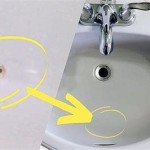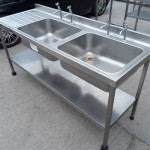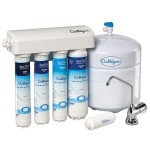How To Clean Stainless Steel Sinks Without Scratching
Stainless steel sinks are a popular choice for kitchens and bathrooms due to their durability and sleek appearance. However, they require specific cleaning methods to maintain their shine and prevent scratches. Improper cleaning techniques can dull the surface and create unsightly marks. This article outlines effective methods for cleaning stainless steel sinks without causing damage.
Understanding Stainless Steel
Stainless steel is an alloy primarily composed of iron, chromium, and nickel. The chromium content forms a passive chromium oxide layer on the surface, providing resistance to corrosion and staining. This layer is self-healing; if scratched, it will reform in the presence of oxygen. However, harsh abrasives and certain chemicals can damage this protective layer, making the sink more susceptible to rust and stains.
Essential Cleaning Supplies
Gathering the appropriate cleaning supplies is crucial for effective cleaning without scratching. Avoid using steel wool, abrasive scouring pads, or harsh chemical cleaners containing bleach or chloride. These can permanently damage the stainless steel surface. Instead, opt for the following:
- Soft cloths or microfiber towels: These gentle materials are ideal for cleaning and polishing without scratching.
- Non-abrasive cleaners: Baking soda, dish soap, and specialized stainless steel cleaners are safe and effective options.
- White vinegar: This natural cleaner can remove hard water stains and disinfect the sink.
- Baking soda: A mild abrasive that can help lift stubborn stains without causing scratches.
- Olive oil: This can be used to polish the sink and restore its shine.
- Spray bottle: Useful for applying cleaning solutions evenly.
Routine Cleaning
Regular cleaning is the key to maintaining a spotless stainless steel sink and preventing the buildup of stubborn stains. After each use, rinse the sink with hot water and wipe it down with a soft cloth. This simple routine helps to remove food particles and prevents water spots.
For more thorough cleaning, sprinkle baking soda over the damp sink surface. Gently scrub the sink with a soft cloth or sponge, using circular motions. Focus on areas with visible grime or water spots. Rinse thoroughly with hot water and dry with a clean, soft cloth to prevent water spots.
Tackling Tough Stains
For more stubborn stains, a paste of baking soda and water can be applied directly to the affected area. Allow the paste to sit for a few minutes before gently scrubbing with a soft cloth. Rinse thoroughly and dry.
Vinegar can also be used to remove hard water stains and disinfect the sink. Fill a spray bottle with undiluted white vinegar and spray the entire sink surface. Allow it to sit for a few minutes before rinsing with hot water and drying with a soft cloth.
Polishing for Shine
To restore the shine of your stainless steel sink, a small amount of olive oil can be used. Apply a few drops of olive oil to a soft cloth and buff the sink in the direction of the grain. This will leave the sink looking clean and polished.
Preventing Scratches and Maintaining Luster
Prevention is crucial for maintaining a pristine stainless steel sink. Avoid placing heavy or sharp objects directly into the sink basin. Use a sink grid or mat to protect the surface from scratches and dents. Also, avoid letting acidic substances like lemon juice or vinegar sit on the surface for extended periods, as this can damage the passive layer.
Regularly cleaning and drying the sink is essential for preventing water spots and maintaining its shine. Following these guidelines will help keep your stainless steel sink looking its best for years to come.
Dealing with Rust Spots
While stainless steel is resistant to rust, rust spots can occasionally appear due to contamination from other metal objects or hard water containing iron. If rust spots do occur, they can often be removed with a specialized stainless steel cleaner or a paste of baking soda and water. Apply the cleaner or paste to the affected area, gently rub with a soft cloth, rinse thoroughly, and dry.
If the rust spots persist, it is advisable to consult the sink manufacturer or a professional cleaning service for recommended solutions. Avoid using harsh chemicals or abrasive cleaners, as these can further damage the sink.

How To Clean Your Stainless Steel Sink And Not Spend A Fortune

How To Get Scratches Out Of Stainless Steel

How To Clean A Stainless Steel Sink Properly Without Damaging It Poppies Cleaning Service

How To Maintain Your Stainless Steel Sink

How To Clean A Stainless Steel Sink Victorian Plumbing

How To Clean A Stainless Steel Sink

How To Clean Your Stainless Steel Sink And Not Spend A Fortune

How To Polish Stainless Steel Sink Home Diy

How To Clean A Stainless Steel Sink Rangemaster

How To Clean A Stainless Steel Sink Blanco







